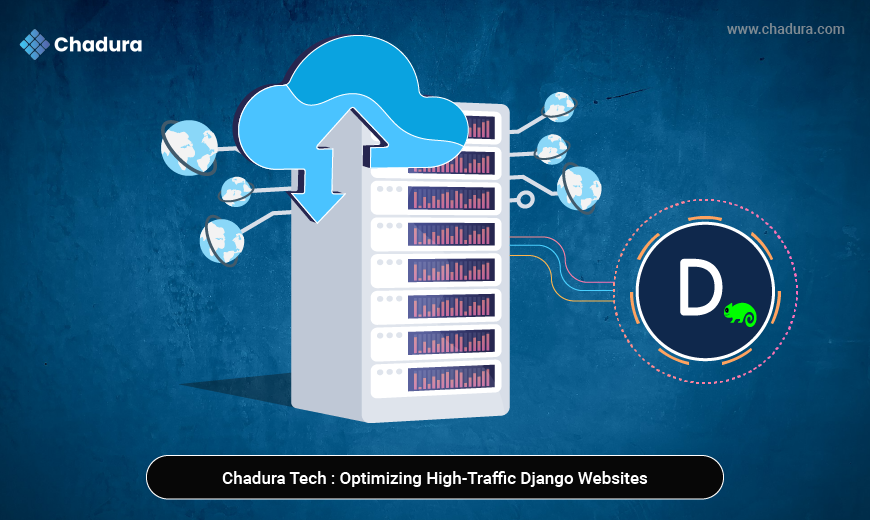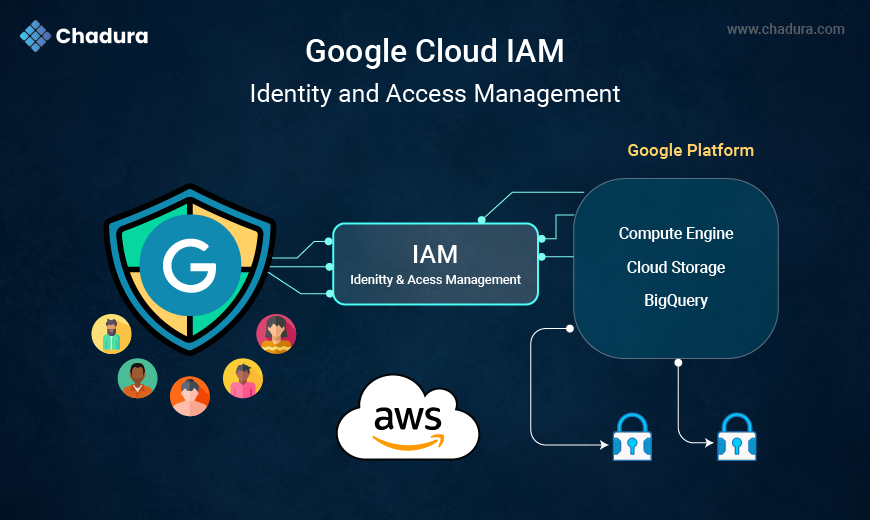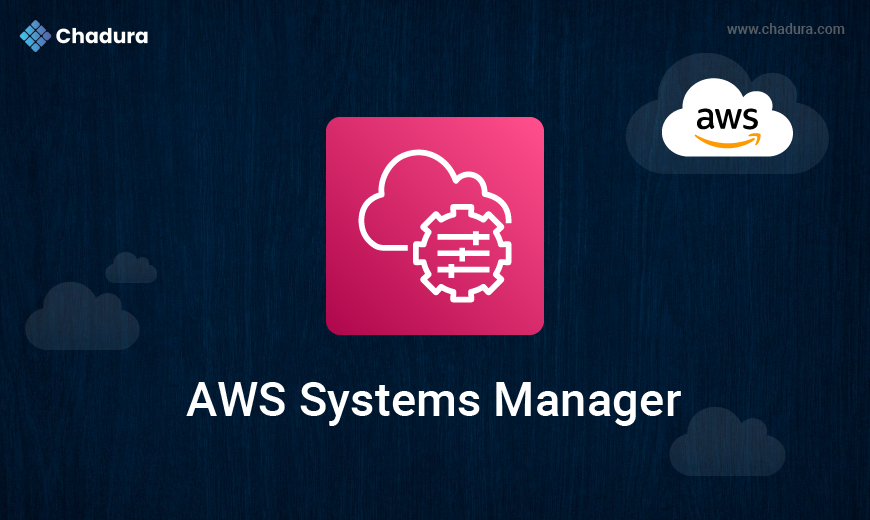In the modern digital landscape, businesses increasingly rely on web applications to interact with customers, manage operations, and deliver services. However, as user numbers surge, the performance of web applications becomes a critical factor. Websites built on Django, a powerful Python framework, face unique challenges under high traffic conditions. Ensuring smooth performance while scaling efficiently requires a combination of robust architecture, optimization strategies, and monitoring practices.
At Chadura Tech, we have deep expertise in building and scaling Django applications to handle thousands of concurrent users without compromising on performance. This guide provides an in-depth exploration of our approach to managing high-traffic Django websites.
Understanding the Challenges of High-Traffic Django Websites
Before implementing solutions, it’s essential to understand the challenges that high-traffic websites face. These challenges can affect performance, user experience, and system stability.
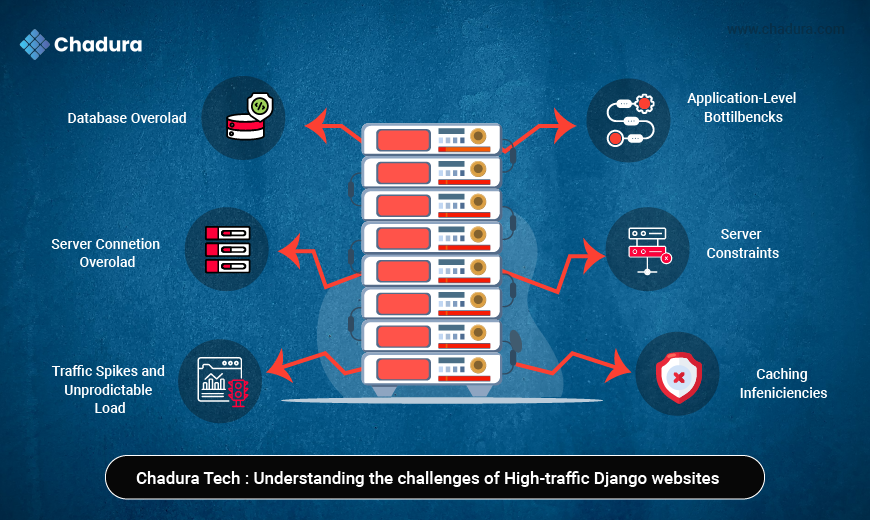
1. Database Overload
The database is often the bottleneck in high-traffic Django applications. As the number of requests increases, the database can become overloaded, resulting in:
- Slow query responses
- Timeouts and failed requests
- Data inconsistencies if writes fail
Without optimization, even a well-written Django application can struggle under peak loads.
2. Application-Level Bottlenecks
High traffic exposes inefficiencies in the application code:
- Synchronous processing of heavy tasks can block user requests.
- Poorly optimized ORM queries can result in N+1 query problems.
- Inefficient middleware or template rendering can slow down response times.
3. Server Constraints
A single server cannot handle unlimited requests. Factors such as CPU, RAM, and network bandwidth can restrict the number of simultaneous users a website can serve.
4. Caching Inefficiencies
Without caching, repeated requests for the same content result in repeated computation and database hits. This significantly increases server load.
5. Traffic Spikes and Unpredictable Load
Events like marketing campaigns, product launches, or financial operations can cause sudden traffic spikes, potentially crashing the system if it’s not prepared for scale.
Chadura Tech’s Multi-Layered Approach to High-Traffic Django Optimization
At Chadura Tech, we adopt a holistic strategy to ensure Django applications can handle heavy traffic while remaining fast and reliable. Our approach focuses on six key areas: database optimization, caching, load balancing, asynchronous task management, web server optimization, and monitoring.
1. Database Optimization
Databases are often the most significant bottleneck in web applications. At Chadura Tech, we employ several strategies to optimize database performance:
Indexing
Indexes allow the database to quickly locate and retrieve data. Properly designed indexes on frequently queried fields can drastically reduce query times.
Read Replicas
For read-heavy applications, creating read replicas helps distribute the load. While the primary database handles writes, replicas handle read requests, improving performance for concurrent users.
Query Optimization
We analyze Django ORM queries to detect inefficient patterns, such as:
N+1 queries: Multiple database hits for related objects, which can be replaced with select_related() or prefetch_related().
- Redundant queries: Queries that can be cached or combined.
By optimizing queries, we reduce database load and improve response times.
Partitioning and Sharding
For extremely large datasets, partitioning tables or sharding databases can ensure that queries remain efficient even under heavy traffic.
2. Caching Strategies
Caching is one of the most effective methods for handling high traffic. At Chadura Tech, we implement multiple caching layers:
In-Memory Caching with Redis or Memcached
- Frequently accessed data (like user sessions, product catalogs, or API responses) is stored in memory for instant retrieval.
- Reduces the need to query the database repeatedly.
Template Caching
- Caching rendered templates reduces CPU load and accelerates response times.
- Particularly effective for pages that don’t change frequently.
Queryset Caching
- Frequently used querysets can be cached in memory.
- Reduces the number of database hits for repeated queries.
Full-Page and Fragment Caching
- For pages with mostly static content, full-page caching can serve content instantly.
- Fragment caching helps when only parts of a page change dynamically.
3. Load Balancing and Horizontal Scaling
Even with optimized code and databases, a single server can only handle so many requests. Load balancing ensures traffic is efficiently distributed across multiple servers:
Horizontal Scaling
- Deploy multiple application servers behind a load balancer (e.g., AWS ELB, Nginx, or HAProxy).
- Ensures no single server becomes a bottleneck.
Auto-Scaling
- Cloud providers like AWS, GCP, and Azure allow automatic scaling based on traffic.
- During traffic spikes, new instances are launched automatically; during low traffic, resources are scaled down to save cost.
Sticky Sessions
- For stateful applications, sticky sessions ensure users stay connected to the same server to maintain session integrity.
4. Asynchronous Task Management
Synchronous processing of resource-intensive tasks can block user requests. Chadura Tech recommends offloading these tasks to background workers:
Celery Integration
- Celery allows heavy tasks like sending emails, generating reports, or processing files to run asynchronously.
- This prevents request blocking and improves user experience.
Message Brokers
- Celery requires a broker like Redis or RabbitMQ to queue tasks reliably.
- Ensures tasks are executed even under heavy load.
Task Scheduling
- Periodic tasks can be scheduled using Celery beat to automate routine jobs without affecting user requests.
5. Web Server Optimization
Optimizing the web server is crucial for handling high traffic efficiently:
Gunicorn + Nginx Setup
- Gunicorn handles multiple worker processes for Django, while Nginx serves static assets and acts as a reverse proxy.
- Nginx also handles SSL termination and load balancing.
HTTP/2 and Compression
- HTTP/2 improves connection efficiency, reducing latency.
- Gzip or Brotli compression reduces the size of HTML, CSS, and JS files, speeding up delivery.
Connection Handling
- Configuring keep-alive and worker timeouts ensures that long-running connections don’t block other requests.
- Asynchronous servers like Daphne or Uvicorn can be used for real-time applications.
6. Monitoring and Logging
Proactive monitoring and logging are critical to detect and resolve issues before they impact users:
Real-Time Monitoring
- Tools like Prometheus and Grafana track server CPU, memory, and response times.
- Enables proactive scaling and troubleshooting.
Error Tracking
- Integration with Sentry for Django provides real-time error tracking.
- Helps developers quickly identify and fix application bugs.
Performance Profiling
- Tools like Django Silk or New Relic profile slow queries, template rendering, and API calls.
- Allows continuous performance improvement.
Advanced Optimization Techniques at Chadura Tech
In addition to the foundational strategies, Chadura Tech implements advanced optimizations for high-traffic websites:
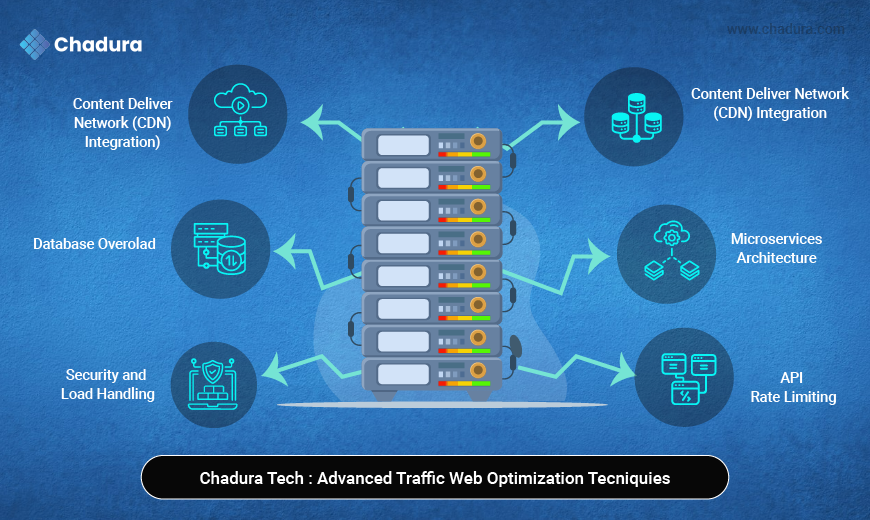
1. Content Delivery Network (CDN) Integration
- Static and media files are served through CDNs like CloudFront or Cloudflare.
- Reduces server load and improves global content delivery.
2. Database Connection Pooling
- Connection pools reduce the overhead of creating new database connections for each request.
- Tools like pgbouncer are commonly used for PostgreSQL.
3. Microservices Architecture
- For very large applications, we split the monolithic Django app into microservices.
- Each service handles a specific functionality and can scale independently.
4. API Rate Limiting
- Protects the system from abuse and ensures fair usage among users.
- Implemented via Django middleware or third-party tools like DRF throttling.
5. Security and Load Handling
- Web Application Firewalls (WAF) prevent DDoS attacks.
Proper session management and HTTPS enforcement maintain data integrity under heavy traffic.
Case Study: Scaling a Django HRMS System
Chadura Tech recently assisted a client in scaling their Human Resource Management System (HRMS), which faced performance issues during payroll processing.
Challenges:
- Heavy concurrent user load during month-end payroll
- Slow database queries for employee records
- Frequent timeouts on reporting features
Chadura Tech’s Solution:
- Database Optimization – Introduced indexing and query optimization.
- Caching – Implemented Redis caching for employee and payroll data.
- Load Balancing – Set up multiple Django application servers behind Nginx load balancer.
- Asynchronous Tasks – Offloaded report generation to Celery workers.
- Monitoring – Integrated Grafana dashboards and Sentry for real-time tracking.
Results:
- 50% faster page load times
- Zero downtime during peak traffic
- Scalable infrastructure ready for future expansion
Best Practices for High-Traffic Django Applications
To ensure optimal performance under high traffic, Chadura Tech follows these best practices:
- Regular Code Profiling – Identify slow queries and optimize them.
- Use of CDNs – Serve static and media files efficiently.
- Template Optimization – Reduce template complexity and cache rendered templates.
- Rate Limiting – Protect against abuse and maintain stability.
- Disaster Recovery Planning – Regular backups and failover strategies.
- Logging and Alerts – Real-time notifications for errors and slow requests.
- Horizontal Scaling – Add more servers when needed instead of overloading a single server.
Chadura Tech’s Philosophy on Scalable Django Development
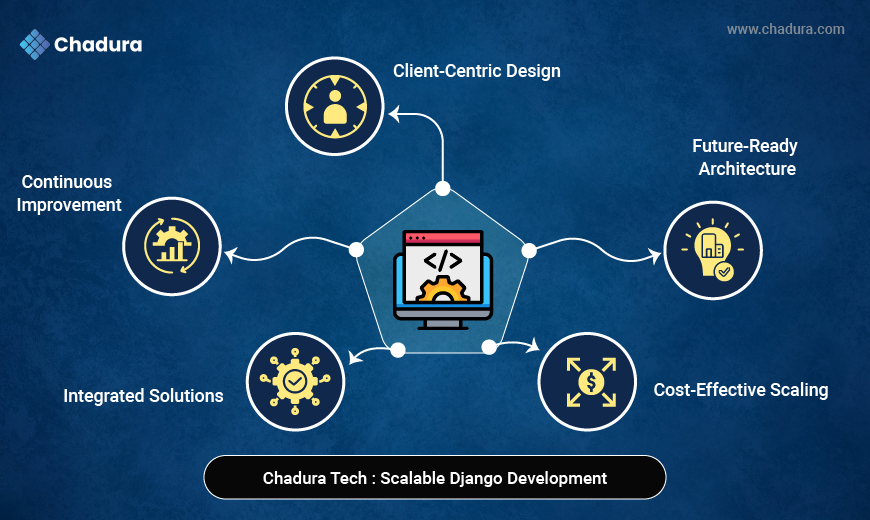
At Chadura Tech, managing high-traffic Django websites goes beyond technical solutions. Our approach is strategic, proactive, and client-focused:
- Client-Centric Design – We understand the specific traffic patterns and business needs.
- Future-Ready Architecture – Applications are built to scale smoothly as user base grows.
- Continuous Improvement – Monitoring, profiling, and optimization are ongoing processes.
- Cost-Effective Scaling – Efficient use of cloud resources to balance performance and budget.
Conclusion
High-traffic Django websites demand more than just coding skills; they require a comprehensive strategy that combines optimization, scalability, monitoring, and proactive management.
Chadura Tech empowers businesses to handle growing user bases, deliver fast response times, and maintain system stability. Whether it’s HRMS systems, e-commerce platforms, or content-heavy portals, our expertise ensures your Django applications are ready for high traffic, resilient, and scalable.
By leveraging database optimization, caching, load balancing, asynchronous processing, and advanced monitoring, Chadura Tech provides a complete blueprint for businesses looking to scale their Django applications efficiently.
Investing in robust infrastructure and intelligent optimization today ensures your web applications can meet the demands of tomorrow.


